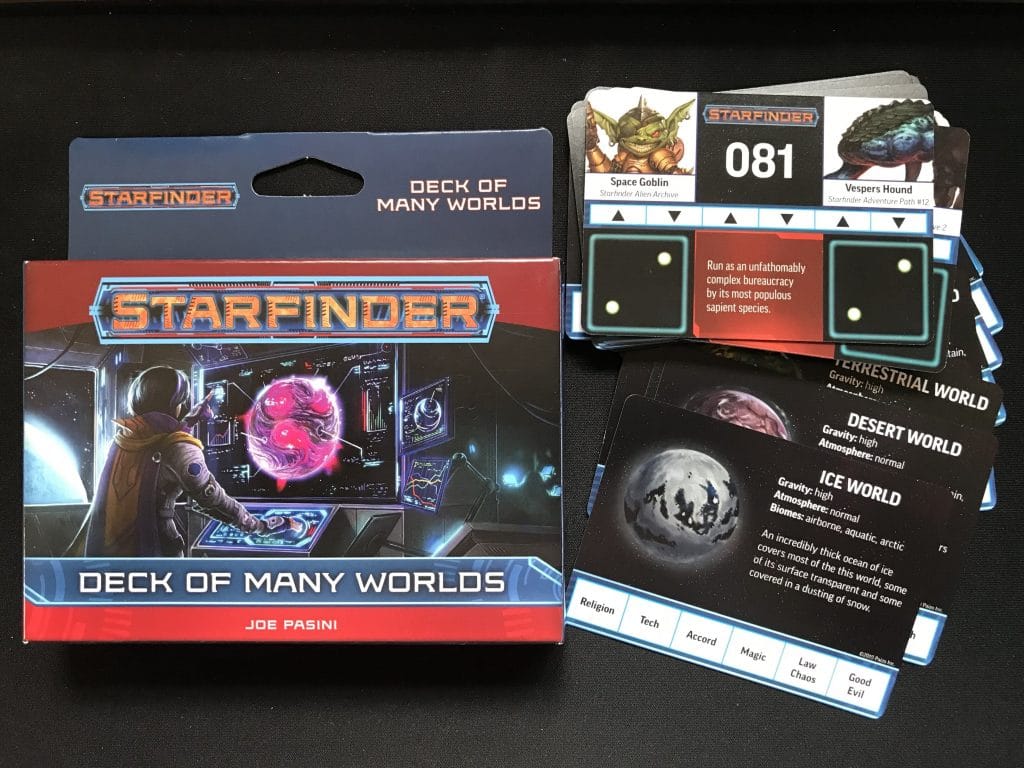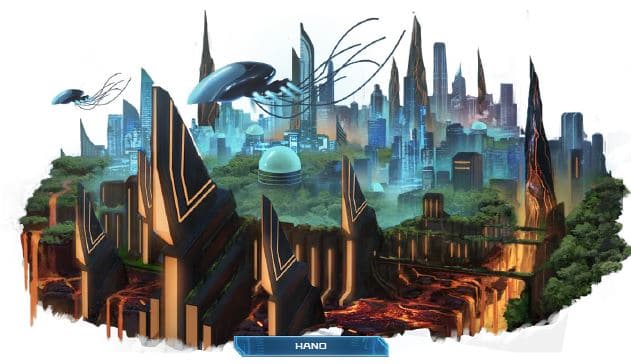Nerds on Earth had already produced a half dozen episodes of our Drift Podcast when Starfinder launched in August of 2017, making the Drift Podcast the first ever Starfinder-centric podcast.
The Drift featured interviews with Starfinder developer Amanda Hamon and Glass Cannon Podcast player Skid Maher, before unexpected health issues of our interviewer halted the show’s development. Why do I share this history? Nerds on Earth has loved Starfinder since before its launch.
Now I’m playing Starfinder with my daughter and my nephews, meaning I’m experiencing the game through young eyes, which is much better than experiencing the game through my 46-year-old myopic eyes. Now, where are my Akiton Biogenetic Ocular Implants?
Now 3 years into the life of Starfinder, let’s talk about the game, its health in the marketplace, and its place in the tabletop roleplaying community.
Happy 3rd Birthday, Starfinder!
Paizo is known for supporting their properties extremely well and this is also true for Starfinder. Paizo has produced flip mats, condition cards, and much more to support Starfinder. The best support product is the Deck of Many Worlds, a planet creation tool that extends to game masters (GMs) even beyond the scope of Starfinder players.
Monthly support comes in the form of 64 page softcover adventure paths. Just like with Pathfinder, the Adventure Path line represents some of the best adventure storytelling in all the tabletop roleplaying industry. Here’s a rundown of all the Adventure Paths for Starfinder.
But the primary support for Starfinder is in the form of hardcovers. Last year the big hardcover was the Character Operations Manual, which added new classes and helped Starfinder take a giant step toward a fully mature product line. This year’s primary hardcover featured tons and tons and tons of options devoted toward starships. Did I mention tons?

Starfinder, Here’s to Your Health!
All this support helps Starfinder maintain the status of a top 5 best-selling product line in all of roleplaying, a nice feat considering that everything lives in the shadow of D&D and fantasy–not science fiction–is the overwhelmingly popular choice in gaming.
So, the science fantasy of Starfinder clearly resonates with nerds, as evidenced by the continued steady sales of the game.
The interesting products that Paizo produces are a part of this, including the aforementioned Deck of Many Worlds. Starfinder developers are nerds themselves, so they know what we want.
But the strength of Starfinder sales is also the clever business model that Paizo introduced with the game. Consider which books that players will want to buy for D&D? Well, just the Player’s Handbook and maybe another book or two, leaving the other dozen+ books to have relevance only for dungeons masters, who make up about 20% of the fan base.
But which Starfinder books should players get? Well, all the hardcovers. The Alien Archives include tons of monsters for a game master to use, but each hardback also has oodles of playable species, something players love. The Starship Operations Manual book has expanded starship combat rules but it also has tons of build options that players enjoy and use.
Finally, the lore of Starfinder is second to none, so all the setting hardcovers like the Pact Worlds or Near Space books are good for players. In short, Starfinder makes all hardcovers useful. Players really just need to avoid the Adventure Paths, as those are for GM eyes only.
Let’s expand a bit further on the Pact Worlds. The strength of Starfinder is its setting, as the rules of the game are overall solid with a couple of notable missteps. Paizo does an excellent job building worlds that nerds want to play in. The Starfinder setting is evocative and fun. And fun is the entire point of the game to begin with, right?
Science Fantasy Games Present Challenges
I’ve written before about the science fantasy of Starfinder, but I want to reiterate that the way Paizo set up a technological world that is also filled with the wonder of wizardry is…well, magical.
Alas, the math isn’t much fun in Starfinder, as if “math” and “fun” are typically used in the same sentence by the majority of humans. Science fiction roleplaying settings have inherent challenges over fantasy roleplaying, namely how to accommodate the power of laser cannon.
I want to affirm that Starfinder does some clever things to mitigate this challenge. Namely, they have two types of armor class numbers, one for energy (lasers) and one for kinetic damage (blunt force).
Well, since you have two types of AC, you may as well have two types of hit points, because if you have high tech armor to absorb laser blasts, it only stands to reason that not all “damage” is physical, some simply drains your your stamina, zapping your ability to will yourself to keep fighting in the midst of a tremendous amount of hostility.
But that creates a problem. If players essentially have two pools of hit points (Hit Points plus those Stamina Points), how do you balance the game when monsters only have a single pool? Well, the developers played with the math, dialing back the player hits against monsters, while dialing up the frequency that the monsters hit.
All that makes perfect sense in theory. Sure, monsters might feel like they always hit you, but you essentially have double hit points, so the damage done rarely takes a player down to zero, meaning players win the fight.
But the problem is that it’s fun to hit a monster and it’s not fun to get hit. It feels bad. Worse, it’s mildly demoralizing when you roll junk after junk only to have the monster hit what feels like every time. Sure, players win in the end, but it doesn’t elicit hoots and hollers around the table.
Get your feelings out of my math, you say! I get that. And I only bring it up because it’s not helpful to just talk about products, we have to have clear eyes on the game itself. Sure, us nerds are mostly mindless consumers, but we occasionally put on our thinking caps.

The Stars Are the Limit
The fact of the matter is that I can give Starfinder a rousing endorsement despite its punishing math. It’s a heck of a lot of fun to play. Sure, the dice feel like they hate you, but the world and characters are vibrant and exciting.
My nephews and daughter and I are having a blast. What did they want their campaign to look like? Well, it’s pretty much modeled after The Mandalorian of course. And that’s perfectly OK with this nerd.
Any game can be tweaked to accommodate the story you wish to tell. Draw from your favorite pop culture. If you’re like my nephews and daughter, Star Wars is the epitome of an epic, sweeping, galactic adventure. Or you might like a more episodic story like Star Trek, or an intrigue story similar to The Expanse. The point is that Starfinder can fill all of those story needs, and it does so with the panache and elegance of an acrobatic Skittermander.
So let’s give three cheers for Starfinder, my favorite Science Fantasy roleplaying game. It certainly is a shining star in the genre, and one I’ll be playing for eons to come.

